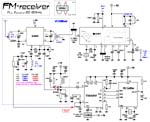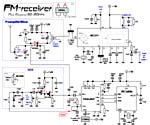 The RF enter the antenna into the tuned LC unit L1 and C1. You can connect the antenna to a
tap point of L1 to achieve best performance, but it takes some experimenting to find the best
tap point place of L1.
The RF enter the antenna into the tuned LC unit L1 and C1. You can connect the antenna to a
tap point of L1 to achieve best performance, but it takes some experimenting to find the best
tap point place of L1. In this schematic you will find a dualgate FET instead of a SA602 mixer circuit.
In this schematic you will find a dualgate FET instead of a SA602 mixer circuit.